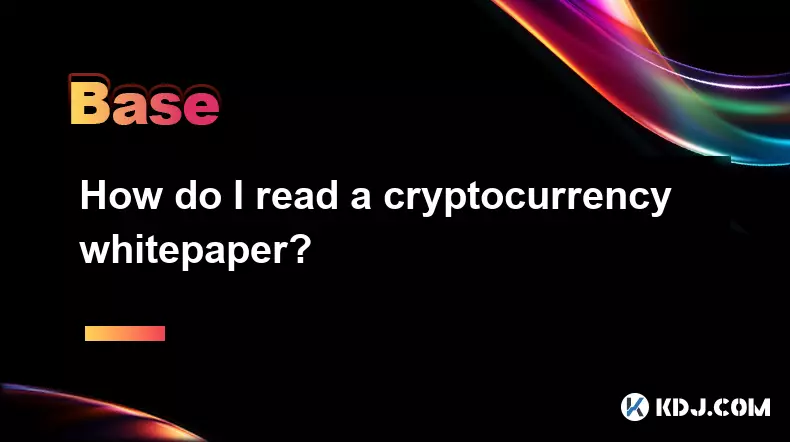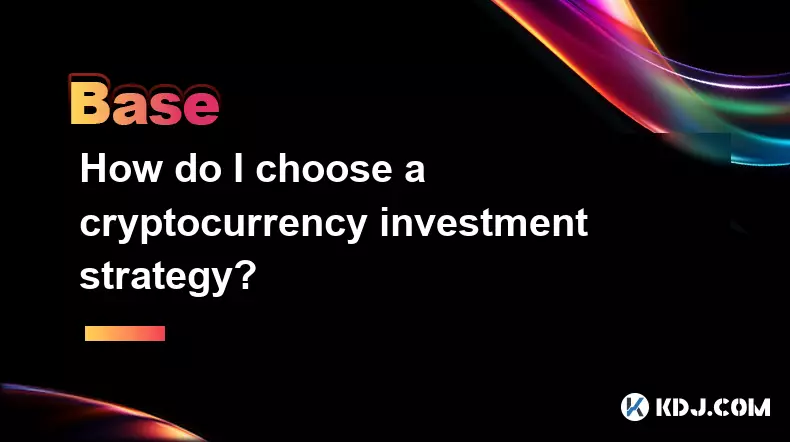-
 bitcoin
bitcoin $123963.239194 USD
1.37% -
 ethereum
ethereum $4529.082464 USD
1.07% -
 xrp
xrp $2.983640 USD
0.71% -
 tether
tether $1.000287 USD
0.02% -
 bnb
bnb $1179.874393 USD
2.99% -
 solana
solana $230.633678 USD
1.55% -
 usd-coin
usd-coin $0.999835 USD
0.03% -
 dogecoin
dogecoin $0.254240 USD
1.34% -
 tron
tron $0.341176 USD
0.15% -
 cardano
cardano $0.842285 USD
0.52% -
 hyperliquid
hyperliquid $48.537896 USD
-0.86% -
 chainlink
chainlink $21.863092 USD
-0.84% -
 ethena-usde
ethena-usde $0.999743 USD
-0.07% -
 sui
sui $3.579561 USD
-0.18% -
 stellar
stellar $0.403418 USD
2.67%
What is a cross-chain bridge? What is the principle of cross-chain asset transfer?
Cross-chain bridges enable asset and data transfer between blockchains, enhancing interoperability and facilitating value exchange across networks.
Apr 12, 2025 at 06:49 am

A cross-chain bridge is a technology that enables the transfer of assets and data between different blockchain networks. This technology plays a crucial role in the cryptocurrency ecosystem by enhancing interoperability and facilitating the seamless exchange of value across various blockchains. Understanding the principles and mechanisms behind cross-chain asset transfer can help users and developers appreciate the complexity and importance of this technology.
What is a Cross-Chain Bridge?
A cross-chain bridge is essentially a protocol or a set of smart contracts that facilitate the movement of assets and information between two or more blockchain networks. These bridges are designed to overcome the inherent limitations of individual blockchains, such as Ethereum, Bitcoin, or Binance Smart Chain, which operate independently and often have different consensus mechanisms, programming languages, and token standards.
Cross-chain bridges can be categorized into different types based on their architecture and operation. Some bridges are centralized, relying on a trusted intermediary to manage the transfer process, while others are decentralized, using cryptographic techniques and smart contracts to ensure security and trustlessness. The choice between these types depends on factors such as security requirements, speed, and the level of decentralization desired.
The Principle of Cross-Chain Asset Transfer
The principle behind cross-chain asset transfer involves locking assets on one blockchain and minting or unlocking equivalent assets on another blockchain. This process ensures that the total supply of assets remains consistent across the networks and prevents double-spending. Let's break down the steps involved in a typical cross-chain asset transfer:
- Initiating the Transfer: The user initiates the transfer by sending assets to a designated address on the source blockchain. This address is controlled by the cross-chain bridge.
- Locking the Assets: Once the assets are received, they are locked in a smart contract on the source blockchain. This step ensures that the assets cannot be used again on the source blockchain.
- Verification: The bridge verifies the transaction on the source blockchain to ensure that the assets have been successfully locked.
- Minting or Unlocking: On the destination blockchain, equivalent assets are either minted (in the case of wrapped tokens) or unlocked from a pre-existing pool. This step ensures that the user receives the same value on the destination blockchain.
- Completing the Transfer: The user can now use the transferred assets on the destination blockchain, and the transfer process is complete.
Types of Cross-Chain Bridges
Cross-chain bridges can be classified into several types based on their operational mechanisms and the level of decentralization. Here are some common types:
- Centralized Bridges: These bridges rely on a central entity to manage the transfer process. While they can be faster and more straightforward to use, they introduce a single point of failure and require users to trust the intermediary.
- Decentralized Bridges: These bridges use smart contracts and cryptographic techniques to facilitate transfers without the need for a central authority. They offer higher security and trustlessness but may be more complex to implement and use.
- Hybrid Bridges: These bridges combine elements of both centralized and decentralized models, aiming to balance speed, security, and user experience.
Security Considerations in Cross-Chain Bridges
Security is a paramount concern when dealing with cross-chain bridges, as they handle the transfer of valuable assets across different networks. Several security measures are implemented to mitigate risks:
- Smart Contract Audits: Regular audits of the smart contracts used in cross-chain bridges help identify and fix vulnerabilities before they can be exploited.
- Multi-signature Wallets: Using multi-signature wallets for critical operations adds an additional layer of security by requiring multiple approvals for transactions.
- Oracles and Validators: Some bridges employ oracles and validators to verify transactions and ensure the integrity of the transfer process.
- Economic Incentives: Implementing economic incentives, such as staking and slashing mechanisms, can deter malicious actors and promote honest behavior among participants.
Use Cases of Cross-Chain Bridges
Cross-chain bridges have a wide range of applications within the cryptocurrency ecosystem. Some common use cases include:
- Decentralized Finance (DeFi): Cross-chain bridges enable users to access DeFi protocols and services across different blockchains, enhancing liquidity and interoperability.
- Asset Diversification: Users can diversify their cryptocurrency holdings by transferring assets between different blockchains, reducing the risk associated with holding assets on a single network.
- Token Swaps: Cross-chain bridges facilitate the swapping of tokens between different blockchains, making it easier for users to exchange assets without relying on centralized exchanges.
- Interoperability: By allowing the seamless transfer of data and assets, cross-chain bridges promote interoperability between different blockchain networks, fostering a more connected and efficient ecosystem.
Implementing a Cross-Chain Bridge
Implementing a cross-chain bridge involves several steps and considerations. Here is a detailed guide on how to set up a decentralized cross-chain bridge:
- Define the Requirements: Determine the source and destination blockchains, the type of assets to be transferred, and the level of decentralization required.
- Design the Architecture: Choose the appropriate architecture for the bridge, such as a lock-and-mint model or a burn-and-mint model, based on the specific needs and constraints of the project.
- Develop Smart Contracts: Write and deploy smart contracts on both the source and destination blockchains to manage the locking and minting/unlocking of assets. Ensure that the contracts are secure and audited.
- Set Up Oracles and Validators: Implement oracles and validators to verify transactions and ensure the integrity of the transfer process. This step is crucial for maintaining the security and trustworthiness of the bridge.
- Test the Bridge: Conduct thorough testing of the bridge to ensure that it functions correctly and securely. This includes testing the locking, minting, and unlocking processes, as well as stress testing to handle high transaction volumes.
- Launch and Monitor: Once the bridge is live, monitor its performance and address any issues that arise. Continuously improve the bridge based on user feedback and evolving security standards.
Frequently Asked Questions
Q: What are the risks associated with using cross-chain bridges?A: The main risks associated with cross-chain bridges include smart contract vulnerabilities, potential hacks, and the risk of funds being locked if the bridge fails. Users should always research the security measures and track record of a bridge before using it.
Q: Can cross-chain bridges be used to transfer any type of asset?A: While cross-chain bridges are primarily used for transferring cryptocurrencies and tokens, some bridges also support the transfer of other types of assets, such as NFTs (non-fungible tokens), depending on the bridge's design and capabilities.
Q: How do cross-chain bridges affect the overall security of the blockchain ecosystem?A: Cross-chain bridges can enhance the security of the blockchain ecosystem by promoting interoperability and reducing the concentration of assets on a single network. However, they also introduce new attack vectors and require robust security measures to mitigate these risks.
Q: Are there any fees associated with using cross-chain bridges?A: Yes, most cross-chain bridges charge fees for facilitating transfers. These fees can vary depending on the bridge and the specific transaction, covering costs such as transaction processing, security measures, and network usage.
Disclaimer:info@kdj.com
The information provided is not trading advice. kdj.com does not assume any responsibility for any investments made based on the information provided in this article. Cryptocurrencies are highly volatile and it is highly recommended that you invest with caution after thorough research!
If you believe that the content used on this website infringes your copyright, please contact us immediately (info@kdj.com) and we will delete it promptly.
- BlockDAG, DOGE, HYPE Sponsorship: Crypto Trends Shaping 2025
- 2025-10-01 00:25:13
- Deutsche Börse and Circle: A StableCoin Adoption Powerhouse in Europe
- 2025-10-01 00:25:13
- BlockDAG's Presale Buzz: Is It the Crypto to Watch in October 2025?
- 2025-10-01 00:30:13
- Bitcoin, Crypto, and IQ: When Genius Meets Digital Gold?
- 2025-10-01 00:30:13
- Stablecoins, American Innovation, and Wallet Tokens: The Next Frontier
- 2025-10-01 00:35:12
- NBU, Coins, and Crypto in Ukraine: A New Yorker's Take
- 2025-10-01 00:45:14
Related knowledge

How does cryptocurrency achieve decentralization?
Sep 30,2025 at 04:37am
Understanding the Foundation of Decentralization in Cryptocurrency1. Cryptocurrency achieves decentralization primarily through the use of blockchain ...

What are some common methods of cryptocurrency market manipulation?
Sep 27,2025 at 02:55am
Wash Trading and Its Impact on Market Perception1. Wash trading involves an individual or entity simultaneously buying and selling the same cryptocurr...

How do I read a cryptocurrency whitepaper?
Sep 27,2025 at 05:54am
Understanding the Structure of a Cryptocurrency Whitepaper1. Begin by identifying the executive summary, which outlines the project’s core vision and ...

Can I recover lost cryptocurrency?
Sep 25,2025 at 08:18am
Understanding the Nature of Cryptocurrency Loss1. Cryptocurrency operates on decentralized networks, meaning there is no central authority to reverse ...

How do I choose a cryptocurrency investment strategy?
Sep 27,2025 at 03:55pm
Understanding Risk Tolerance in Crypto Investing1. Assessing personal risk tolerance is a foundational step when entering the cryptocurrency market. V...

How can I earn passive income from cryptocurrency?
Sep 23,2025 at 10:18am
Staking Cryptocurrencies for Regular Returns1. Many blockchain networks operate on a proof-of-stake (PoS) consensus mechanism, allowing users to earn ...

How does cryptocurrency achieve decentralization?
Sep 30,2025 at 04:37am
Understanding the Foundation of Decentralization in Cryptocurrency1. Cryptocurrency achieves decentralization primarily through the use of blockchain ...

What are some common methods of cryptocurrency market manipulation?
Sep 27,2025 at 02:55am
Wash Trading and Its Impact on Market Perception1. Wash trading involves an individual or entity simultaneously buying and selling the same cryptocurr...

How do I read a cryptocurrency whitepaper?
Sep 27,2025 at 05:54am
Understanding the Structure of a Cryptocurrency Whitepaper1. Begin by identifying the executive summary, which outlines the project’s core vision and ...

Can I recover lost cryptocurrency?
Sep 25,2025 at 08:18am
Understanding the Nature of Cryptocurrency Loss1. Cryptocurrency operates on decentralized networks, meaning there is no central authority to reverse ...

How do I choose a cryptocurrency investment strategy?
Sep 27,2025 at 03:55pm
Understanding Risk Tolerance in Crypto Investing1. Assessing personal risk tolerance is a foundational step when entering the cryptocurrency market. V...

How can I earn passive income from cryptocurrency?
Sep 23,2025 at 10:18am
Staking Cryptocurrencies for Regular Returns1. Many blockchain networks operate on a proof-of-stake (PoS) consensus mechanism, allowing users to earn ...
See all articles










































































